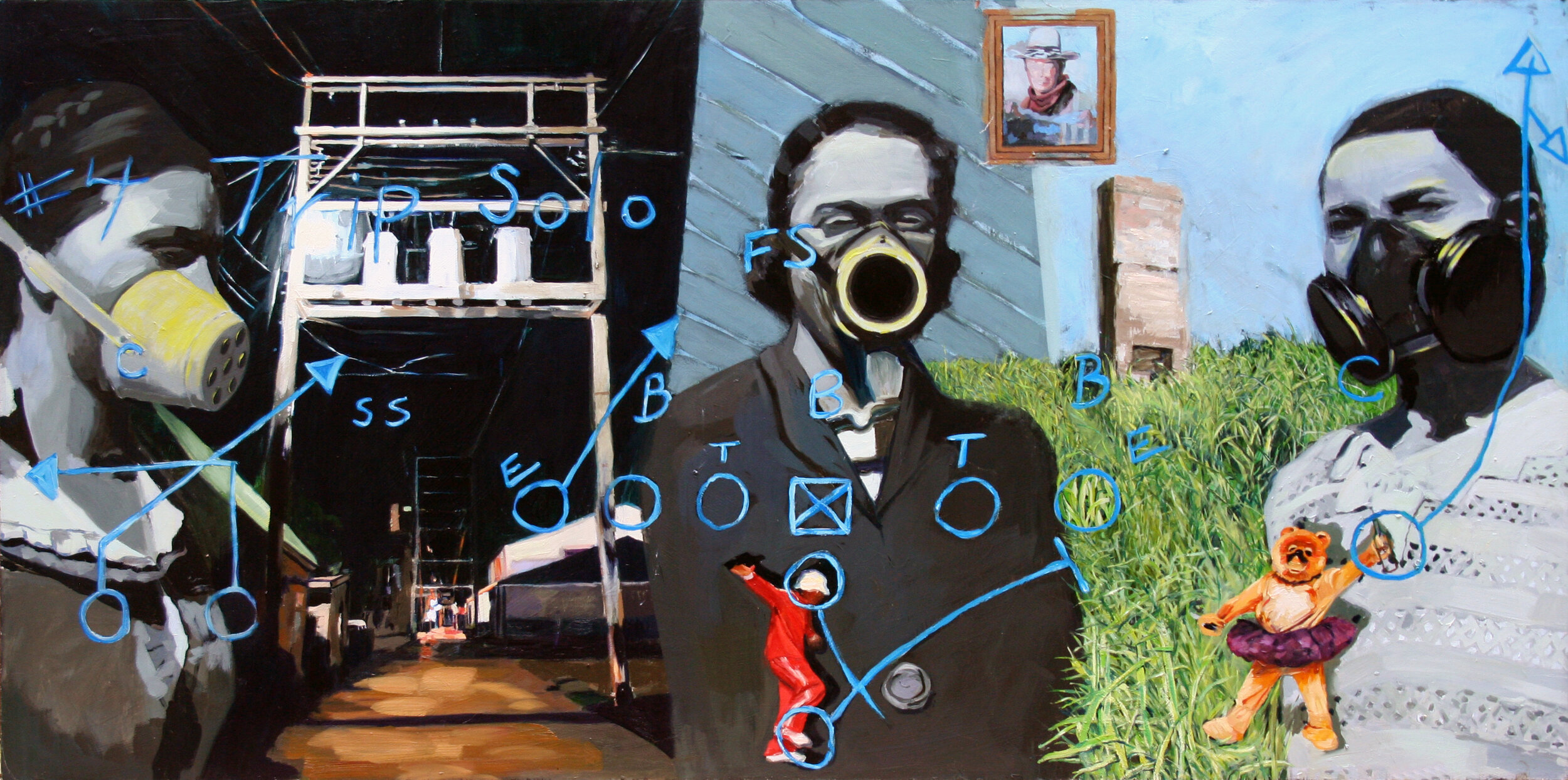Disaster Preparation Resources for Artists (to be filed under future toolkit ideas)
Jennifer Drinkwater, Issaquena, acrylic/oil on wood panel, 24'“ x 48”, 2013. Collection of John Duncan Powell.
**Full disclosure: I am writing this post for myself as much as for anyone else. I certainly haven’t done all of these things yet. And honestly, at this point in 2020, not taking this seriously seems like asking for it. Let’s not tempt fate, folks.
For you Enneagram nerds out there, I’m a six.* ^^^^^
** I won’t run down each Enneagram personality type for you, but suffice it to say that sixes are the devil’s advocate. We see danger, and promptly freak out, before it happens. We are nature’s actuaries. And to get really real with you, the whole reason I started The What’s Good Project was to temper this part of me.
To be honest, 2020 has not been overly surprising to sixes. We’ve been scanning the horizon for danger our whole lives. Thinking of, and planning for, possible worst case scenarios is our hobby. Every six you know has been smugly thinking to themselves all year, “I TOLD y’all. Y’all wouldn’t listen. You thought I was crazy, but I TOLD y’all.”
In the midst of a global COVID pandemic, much of Iowa is still reeling from the derecho that hit our state two weeks ago. Last Monday, I touched on some easy and effective ways you can support artists who are living through a catastrophic situation, such as an illness, pandemic, or natural disaster. If you missed that post, check it out here.
Today is a brief checklist on how to prepare for a potential disaster situation. This is a very general overview aimed to touch on topics that young, emerging, and/or procrastinating artists may not have considered or gotten around to tackling. Next week, we’ll dive into what to do when you find yourself in catastrophe.
Three Crucial Preparation Steps for Every Artist to Take (Before Disaster Strikes)
Make sure your insurance is solid and up-to-date. I’m not an expert on this topic. Make sure you connect with someone who is, before purchasing any policies. Depending on your practice, you may need insurance for the following:
Your studio space: structure, facilities, and equipment. For those of us who rent spaces, you best have renter’s insurance. It’s cheap and it’s vital.
Transporting Artwork. Shipping companies damage artwork. It happens.
Exhibiting Artwork . Always inquire about a gallery’s insurance policy up front. If they don’t have it, consider a policy that covers these situations.
Art Fairs and Festivals.
Liability insurance to:
Protect yourself if you open your studio to the public.
Protect yourself while creating and installing public art projects.
Protect yourself and your students while teaching classes or workshops.
Disability Insurance. What if you become injured?
2. Keep impeccable records. And back them up regularly.
Create a photographic/video inventory of your studio space, including tools, materials, equipment, and all your artwork. Upload to the cloud.
Create a spreadsheet of all financial records and expenses. For individual artwork, indicate the cost to create it and the sale price. When in doubt, document.
**True Story: I had impeccable art records in a folder on my desktop. They took years to create. I was so proud of them. Like a dummy, I didn’t them back up. I accidentally deleted the entire folder in April. It sucked big time. I had to comb through emails and social media to recreate all my grant applications, exhibition records, documentation of artwork, commission agreements, contracts, income records, mailing lists, etc, etc, etc. I am a horrible warning for you.
3. Create an emergency preparation kit for your home and studio space. Some ideas may include:
a fireproof box for documents
a backup hard drive
flashlights and batteries
extension cords
stocked toolbox
extra materials/supplies
tarps
duct tape
a generator
wireless phone charger
gloves
First Aid supplies
bottled water
nonperishable snacks
Cooler ***
Camping lantern***
Headlamps (at least one for each floor, regardless of household size)***
A ladder long enough to allow safe access to your roof (even if you don’t plan to be on the roof)***
A stash of pet food specifically for disaster***
A full can of gas (who in the world would anticipate all gas stations would be inaccessible for days?!)***
*** Friend and fellow artist Akwi Nji contributed these items from her firsthand experience of surviving the 2020 Iowa derecho.
Artist Preparation Resources:
“CERF+ serves artists who work in craft disciplines by providing a safety net to support strong and sustainable careers. CERF+’s core services are education programs advocacy, network building and emergency relief.” They offer preparation grants for craft artists to get their sh&t together, so to speak, although these have been suspended due to COVID. They have great videos on a variety of topics, such as insurance, legal service tips, and taxes for creatives.
Insurance Resources:
https://www.artbusinessinfo.com/insurance-for-art-and-artists.html
https://www.artworkarchive.com/blog/5-insurance-tips-for-artists
Prepping for a Recession:
Feeling nervous about a recession? Read Bruce Nussbaum’s free Guide on How to Recession-Proof Your Career. It’s both pragmatic and philosophical.
He writes: “Creative people have the BEST skill set to successfully surf a recession. Take a moment to think about it: Who can best navigate uncertainty? Who can meet unexpected challenges? Who can pivot and switch to plan “B” in a second? Who already tends to work inside of crisis mode a lot of the time? Who can visualize possible futures? You.”
I’m curious - what have y’all done to prepare for a disaster? What do you wish you’d done? Comment below!
Read Easy and Effective Ways You Can Support Artists During Disaster Recovery and Step-by-Step Disaster Recovery for Artists to learn more ways artists need support during challenging times.
